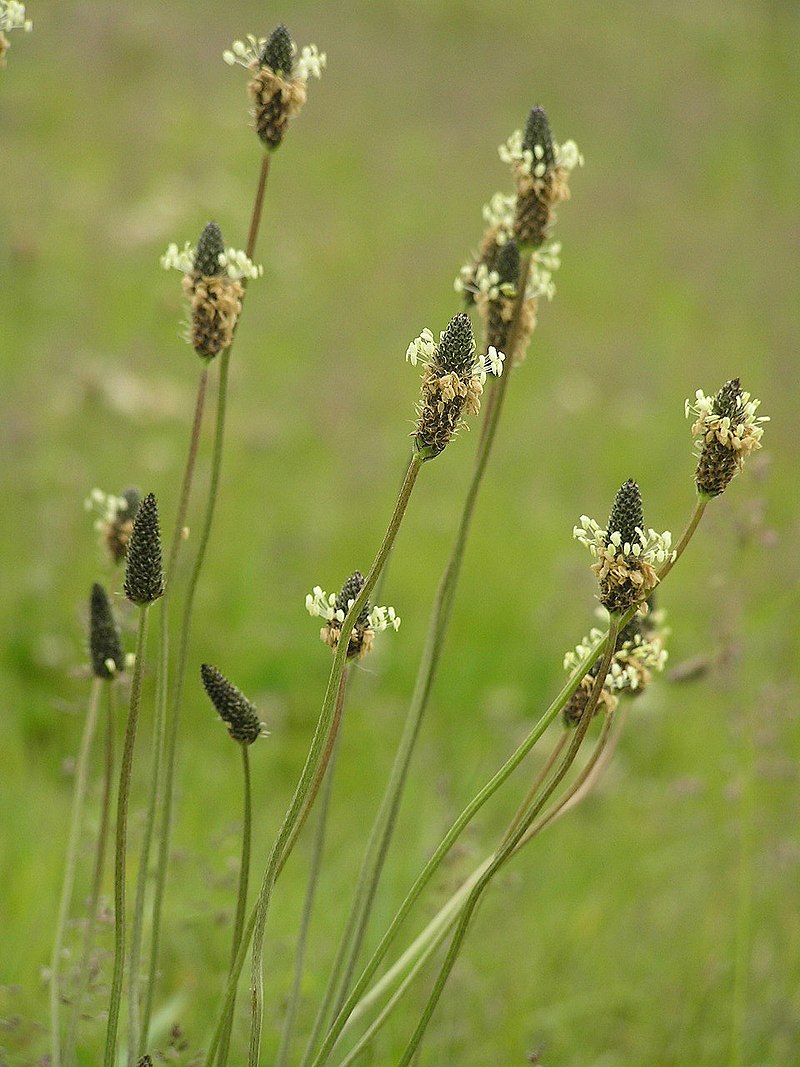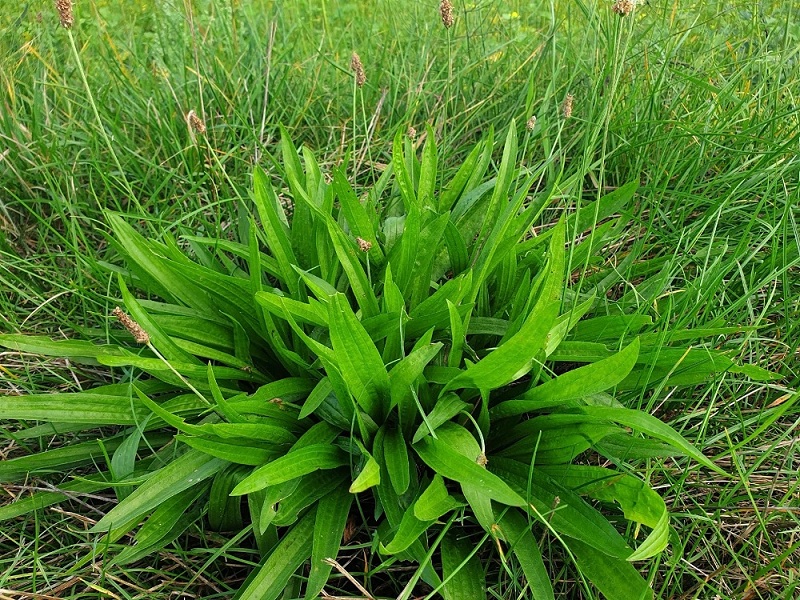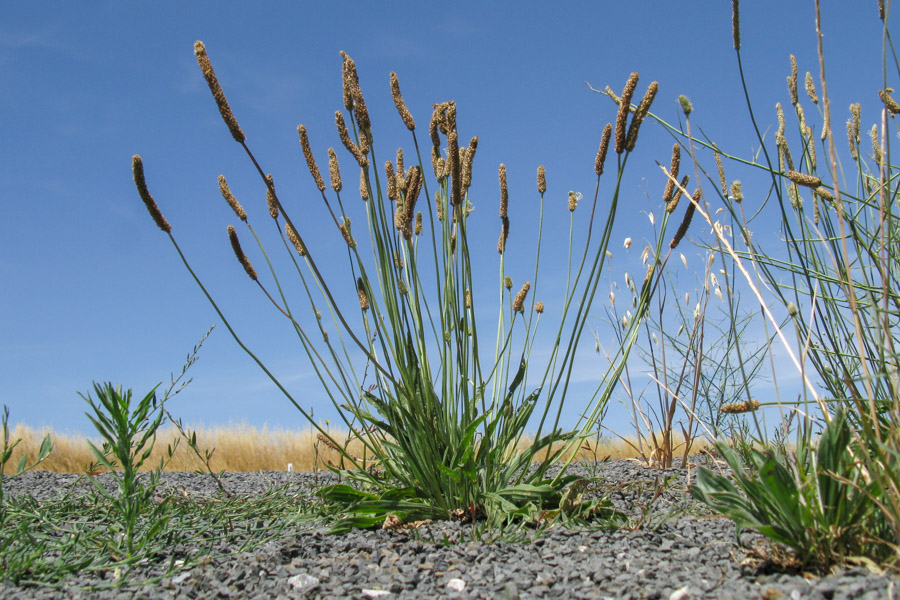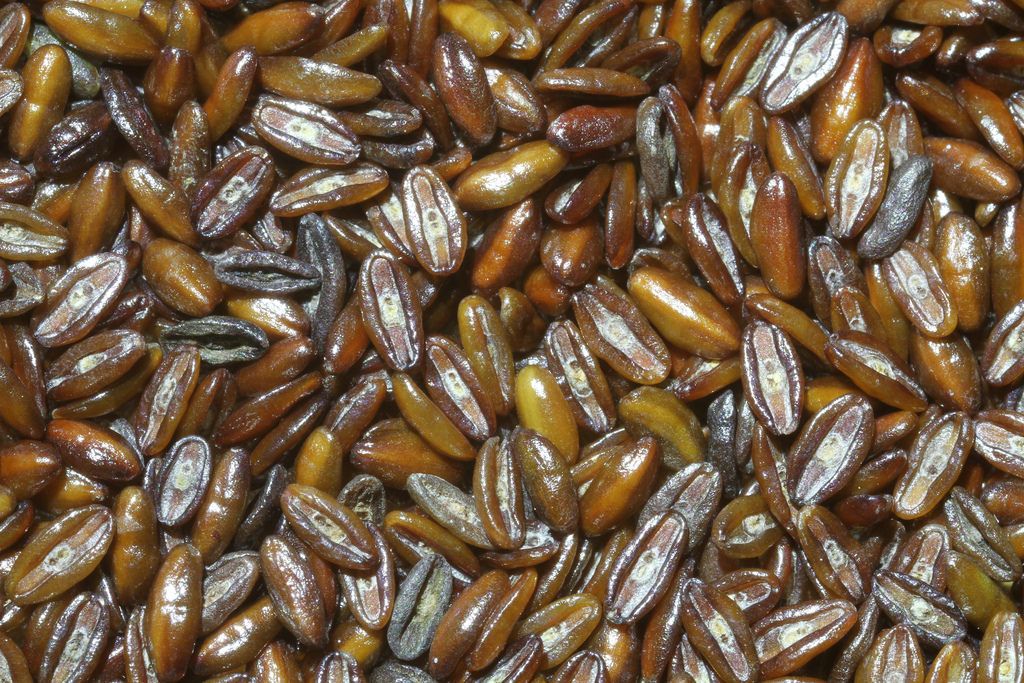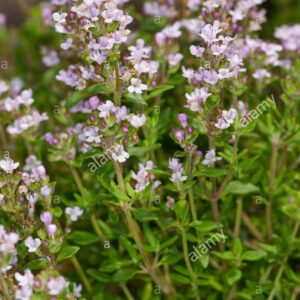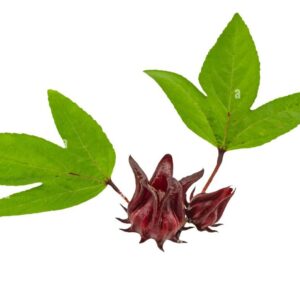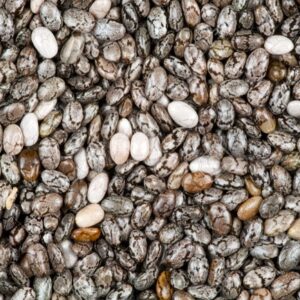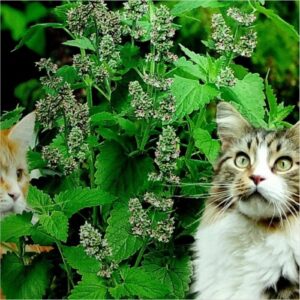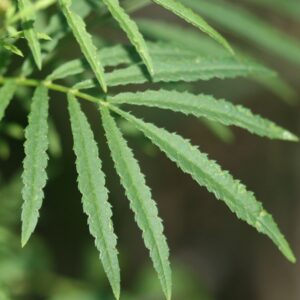توضیحات
Plantago lanceolata is a species of flowering plant in the plantain family Plantaginaceae. It is known by the common names ribwort plantain, narrowleaf plantain, English plantain, ribleaf, lamb’s tongue, and buckhorn. The plant is a rosette-forming perennial herb, with leafless, silky, hairy flower stems (10–40 cm or 3.9–15.7 in). The basal leaves are lanceolate spreading or erect, scarcely toothed with 3-5 strong parallel veins narrowed to a short petiole. The flower stalk is deeply furrowed, ending in an ovoid inflorescence of many small flowers each with a pointed bract. Each inflorescence can produce up to two hundred seeds. Flowers are 4 millimetres (0.16 in) (calyx green, corolla brownish), 4 bent back lobes with brown midribs and long white stamens. It is native to temperate Eurasia, widespread throughout the British Isles, but scarce on the most acidic soils (pH < 4.5). It is present and widespread in the Americas and Australia as an introduced species
Plantago lanceolata is native to Eurasia, but has been introduced to North America and many other parts of the world with suitable habitats
Considered to be an indicator of agriculture in pollen diagrams, P. lanceolata has been found in western Norway from the Early Neolithic onwards, which is considered an indicator of grazing in that area at the time. This would make sense, as P. lanceolata thrives in open fields where livestock are frequently disturbing the ground
Plantago lanceolata is used frequently in herbal teas and other herbal remedies. A tea from the leaves is used as a cough medicine. In the traditional Austrian medicine Plantago lanceolata leaves have been used internally (as syrup or tea) or externally (fresh leaves) for treatment of disorders of the respiratory tract, skin, insect bites, and infections.The leaves can be eaten when very young
Songbirds eat the seeds, and the leaves are eaten by rabbits
بارهنگ نیزه ای یا کاردی گياهى علفي، چندساله و داراى ساقهٔ گلدهندهٔ ايستا به ارتفاع ۵ تا ۴۰ سانتىمتر که توسط بذر و يا جوانههائى که از ريشهها منشاء مىگيرند تکثير مىيابد. ساقهٔ گلدهندهٔ اين گياه، بدون برگ، باریک و بلند، شياردار و داراى انعطافپذيرى زياد است. برگها قاعدهاى (روزت)، کشيده، سرنيزهاى شکل، نوک تيز، شامل ۳ تا ۷ رگبرگ برجسته و موازي، با حاشيههاى صاف و بدون دندانه يا داراى دندانههاى کم، به طول ۱۰ تا ۲۰ سانتىمتر و عرض ۷/۰ تا ۲ سانتىمتر و منتهى به دمبرگ است. ريشههاى اين گياه افشان و سطحي، بادوام و شامل ريشههاى فرعى ضعيف است.
گلآذين انتهائى و بهصورت سنبلهاى کوتاه و استوانهاى شکل که در رأس هر ساقه گلدهنده ديده مىشود. گلها نسبتاً متراکم، به رنگ سفيد متمايل به سبز، با غنچههاى تخممرغى شکل هستند. محور سنبله به سمت بالا به مرور باريک مىشود و پرزدار و قهوهاى رنگ است.
ميوهٔ اين گياه کپسول، شامل يک حجره است که محتوى بذرى قهوهاى رنگ، قايقى شکل، کوچک، به اندازهٔ ۲ تا ۷ ميلىمتر، با سطحى صاف است. جوانهزنى اين بذرها سطحى و در عمق نیم سانتىمترى سطح خاک انجام مىشود. هنگامى که رطوبت به بذرها برسد چسبنده و لعابدار خواهند شد.
موسم گلدهى اين گياه خرداد تا شهريور ماه است.
گياه مذکور مناطق مرطوب و خاکهاى شنى را ترجيح مىدهد و بيشتر در علفزارها، چمنزارها، مزارع سبزي، باغچههاى زينتي، حاشيهٔ نهرها، زمينهاى باير و حاشيهٔ مزارع رشد مى کند.
